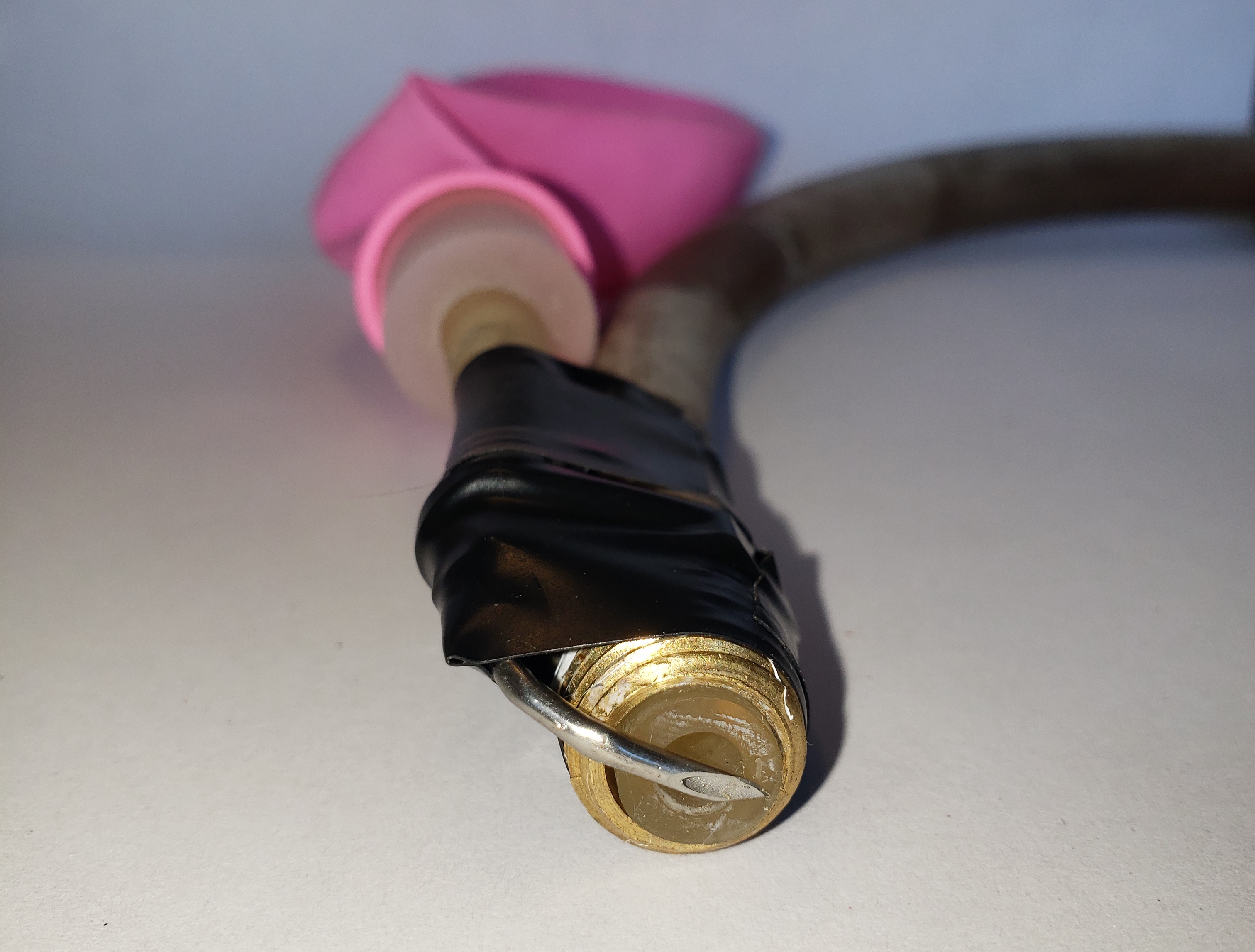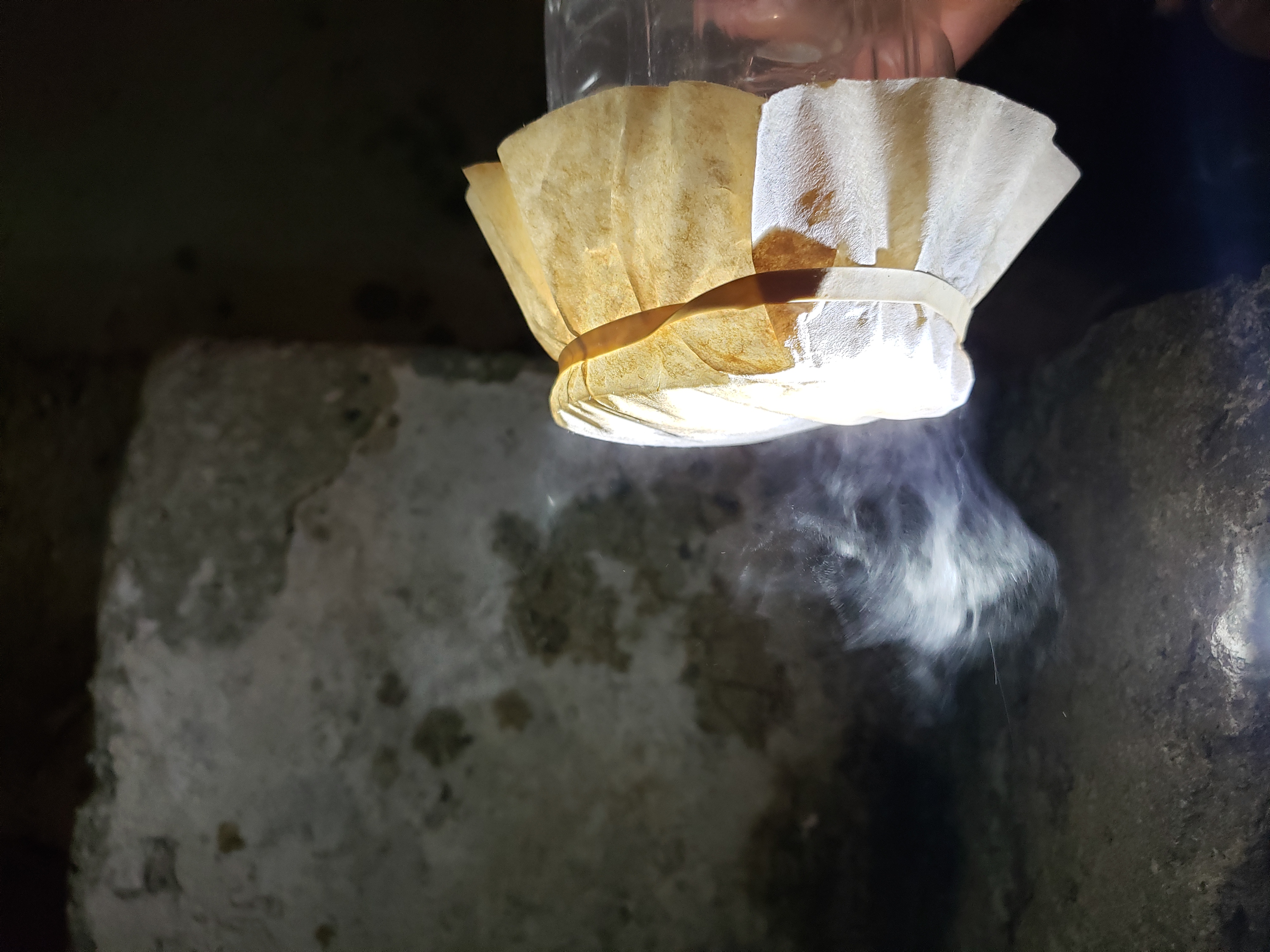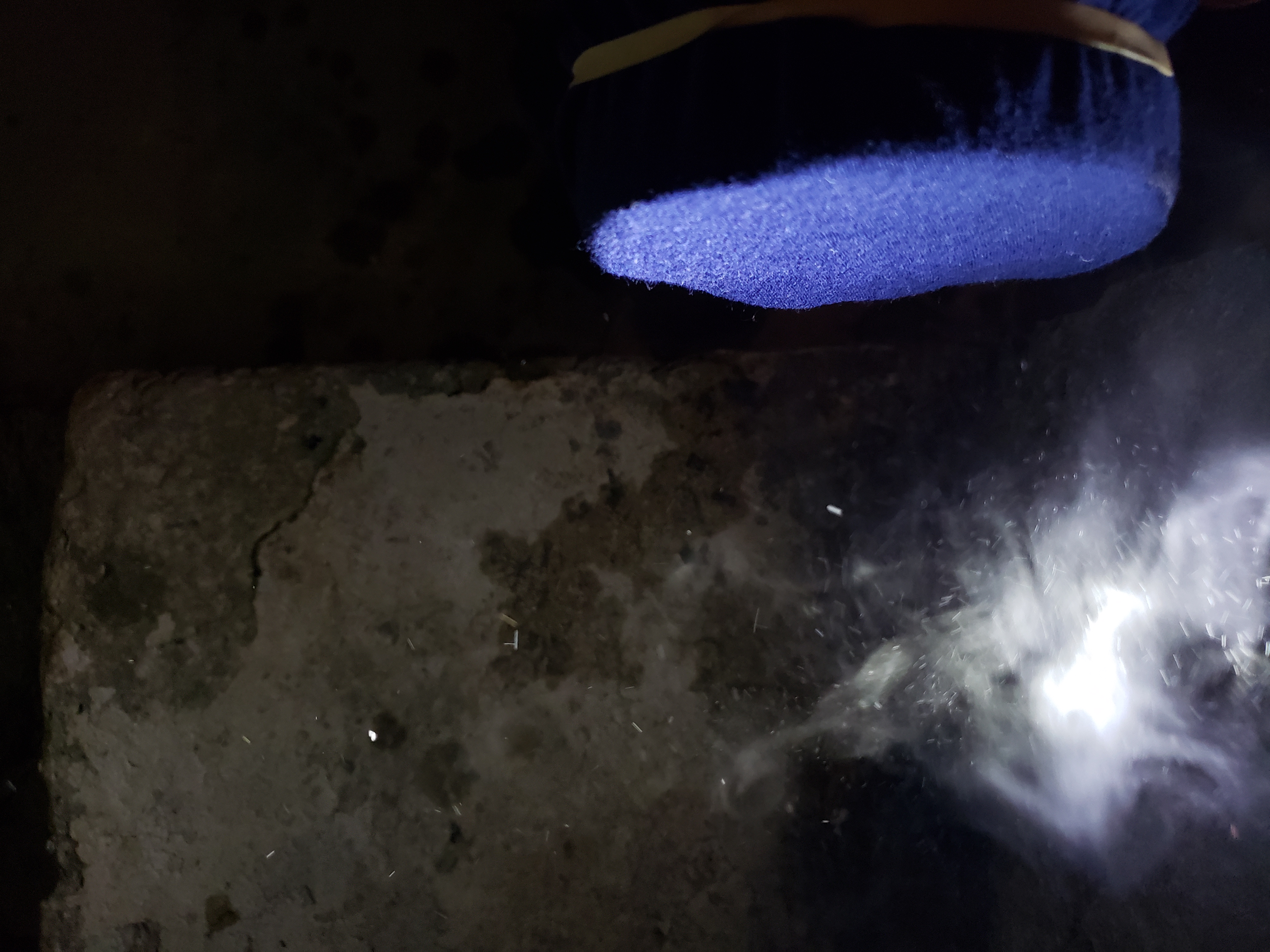Mask Material Tester
Homemade Mask Material Selection
With the current pandemic, shortages of PPE, and growing mandates to wear masks in public, many people are turning to making their own. However, when my family and I started making masks in early April, it was hard to find even any qualitative data on the performance of the t-shirts, quilting fabric, or coffee filters that were being used. So, I created a simple aerosol machine I could attach to candidate materials.
Design
To create a sneeze-like aerosol, I decided to use the venturi effect to draw water into an air stream and aerosolize it, similar to a carburetor in a small engine. I used an air compressor with some restrictions to get a moderate flow of air, and attached a 16 guage hypodermic needle across the exit with the taper facing down-stream. The needle was attached with a short piece of tubing to a balloon that served as a water reservoir.

Testing
I cut the bottom end off of a gatorade bottle, fitted mask materials with a rubber band over the large end, and blew an aerosol through the small end towards the mask material. To be able to see the droplets getting through, testing was done at night with a bright flashlight illuminating the mask exit from the side. I considered going to the effort of fixturing all parts of this so I could get consistent images and compare the reflectivity of the post-mask aerosol cloud as a measure of mask efficiency. However, I could easily see which materials were good and less good so I did not put the time into converting rough cloud sizes into numbers.

Coffee Filter

Cotton Sheet
Results
I tested a 3M N-95 mask, a surgical mask from a convenience store in Egypt (don’t ask), 100% cotton and cotton blend t-shirts, quilting cotton, coffee filters, paper towels, a merino wool head wrap, a re-usable non-woven grocery bag, and some combinations of paper towels/coffee filters with a cotton outer layer.
- All the ask materials significantly reduced the amount of droplets exiting the bottle
- The 3M mask allowed 0 visible particles through – very far above any other material tested
- The thin surgical mask performed no better than a coffee filter or a cotton sheet. I suspect thicker/multilayer surgical masks will perform much better, but I did not have these on hand
- With the exception of the 3M N95, materials or material combinations that were more difficult to breathe through filtered more particles
- Multiple layers increased the filtering function for all materials